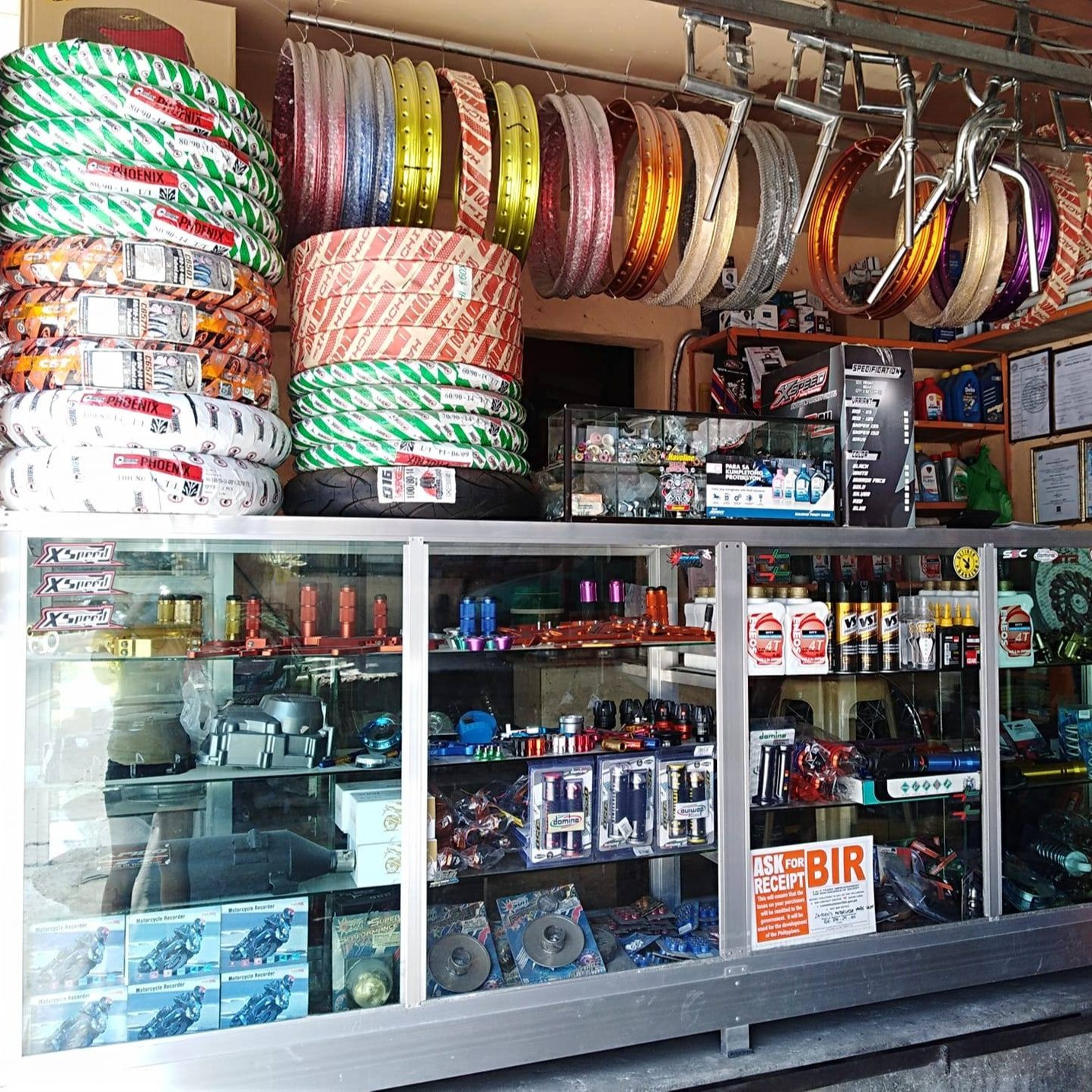Browse Through Our Motorcycle Shop for Specialist Suggestions and Top Quality Products
Browse Through Our Motorcycle Shop for Specialist Suggestions and Top Quality Products
Blog Article
Recognizing the Important Parts of a Motorbike: A Comprehensive Guide for Enthusiasts
For motorbike enthusiasts looking to boost their riding experience and ensure their bikes run efficiently, recognizing the crucial parts of a motorbike is paramount. Each component, from the engine's elaborate functions to the important duty of the stopping mechanisms, not just affects efficiency but likewise safety and comfort.
Engine Parts

The camshaft plays an essential role in regulating the timing of the engine's shutoffs, guaranteeing the specific opening and closing necessary for efficient gas and air consumption, along with exhaust expulsion. This timing is critical to keeping optimal engine performance and effectiveness. In addition, the carburetor or gas shot system, depending on the motorbike model, is accountable for blending air with fuel in the appropriate proportion for combustion.
The cooling system, either air or liquid-based, functions to keep the engine's temperature within operational limitations, stopping getting too hot and ensuring durability - moto parts nz. Each part, carefully designed and integrated, adds to the smooth procedure of the engine, specifying the bike's power output and general efficiency
Transmission System
Important to the bike's functionality, the transmission system ensures reliable power transfer from the engine to the wheels. This system consists of numerous vital parts, including the clutch, gearbox, and final drive, each playing an essential duty in translating the engine's power right into movement. The clutch, usually operated by a hand lever, serves to engage and disengage the engine from the transmission, enabling smooth gear modifications and regulated acceleration.
The gearbox, usually described as the transmission correct, consists of a set of gears that cyclists can by hand change through to adjust the bike's speed and torque output. These gears are arranged in a series that makes it possible for the motorcycle to speed up efficiently and preserve ideal engine performance throughout numerous speeds. A lot of motorbikes use a sequential transmission, calling for the cyclist to change equipments in a predetermined order.
Braking Mechanisms
While comprehending the transmission system is vital to harnessing a bike's power, similarly vital is the ability to regulate and stop that power effectively, which is where braking mechanisms enter into play. Brakes are vital for security and performance, offering the cyclist with the needed control to navigate numerous terrains and problems. Generally, motorcycles feature 2 types of braking systems: disc brakes and drum brakes.
Disc brakes are extra common in modern-day motorcycles due to their premium performance. This system supplies better warmth dissipation, constant performance, and improved quiting power, especially in damp conditions.
Conversely, drum brakes, though much less common, are still located in some motorbikes. They function by pressing brake shoes versus the internal surface of a drum affixed to the wheel. While usually much less reliable in warm dissipation and quiting power, drum brakes are simpler and more affordable.
Comprehending these braking systems' subtleties enables riders to maintain their bikes properly and value the design that makes sure safe and efficient best helmet lock stopping.
Suspension and Guiding
Suspension and steering systems are essential elements that substantially influence a motorbike's handling and experience comfort. The suspension system, consisting of forks at the front and shock absorbers at the back, takes in roadway irregularities, enhancing security and control. Front forks, normally telescopic or inverted, compress and rebound to reduce influences, while rear shock absorbers keep tire call with the roadway, essential for grip and security.
Guiding, centered around the handlebars, attaches the motorcyclist to the bike's directional control. The steering head bearings ensure smooth procedure, allowing precise maneuverability. Proper placement and upkeep of these bearings are vital for predictable guiding response and decreasing motorcyclist exhaustion.
The suspension's adjustability is an additional important facet; preload, damping, and rebound setups enable personalization to fit various riding styles and conditions. This adaptability is essential for enhancing efficiency, whether browsing urban roads or dealing with tough read this tracks. Advancements like digital shock absorber use real-time changes, boosting experience top quality throughout diverse surfaces.

Electrical Solutions
After guaranteeing a smooth and regulated ride with efficient suspension and steering systems, attention transforms to the electric systems, an essential element of modern-day motorcycles. These systems play an important role not only in beginning the engine however additionally in powering different elements that improve the functionality and security of the bike.
At the heart of a motorcycle's electrical system is the battery, which stores electric power required for starting the engine and powering supporting systems - mx parts nz. The generator or generator, coupled with the rectifier-regulator, makes sure the battery continues to be billed while the bike is in operation, converting mechanical power right into electric energy and keeping voltage levels
The ignition system, one more important component, is responsible for sparking the air-fuel blend in the engine's cyndrical tubes. Modern bikes commonly make use of an electronic ignition system, using greater effectiveness and dependability contrasted to typical systems.
Lights systems, consisting of headlights, tail lights, and indicators, are likewise crucial, making certain exposure and security for the cyclist. Additional digital components such as sensing units, control systems, and presents add to sophisticated attributes like fuel shot monitoring, anti-lock braking systems (ABDOMINAL), and electronic control panels, even more boosting the riding experience.
Verdict
A comprehensive understanding of a bike's vital parts, including the engine, transmission system, stopping systems, suspension, steering, and electrical systems, is important for fanatics intending to maximize security, performance, and comfort. Mastery of these components enables informed decisions relating to upkeep and upgrades, eventually improving the riding experience. By integrating this knowledge, bikers can guarantee their bikes operate at peak effectiveness and integrity, consequently optimizing both satisfaction and longevity of their vehicles.
For motorcycle lovers looking to raise their riding experience and ensure their bikes run efficiently, comprehending the necessary parts of a motorbike is critical.Indispensable to the bike's capability, the transmission system makes sure effective power transfer from the engine to the wheels.While comprehending the transmission visit site system is vital to harnessing a bike's power, just as important is the capability to control and quit that power successfully, which is where braking systems come right into play. Normally, motorcycles feature two kinds of stopping systems: disc brakes and drum brakes.
An extensive understanding of a bike's important parts, including the engine, transmission system, braking systems, suspension, guiding, and electrical systems, is essential for fanatics intending to optimize safety and security, performance, and comfort.
Report this page